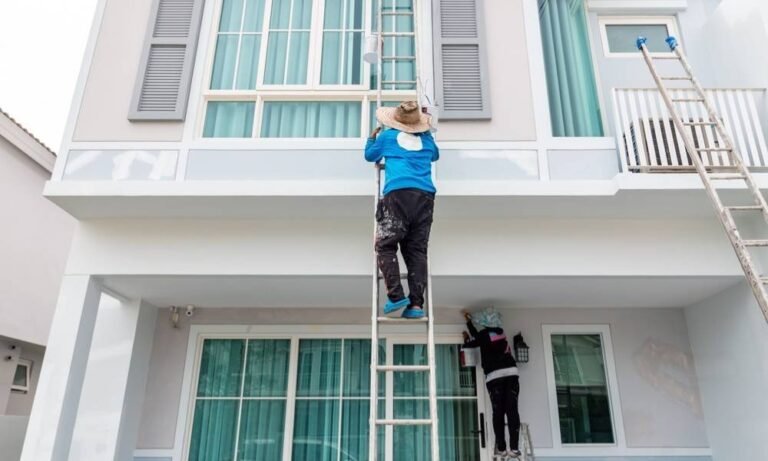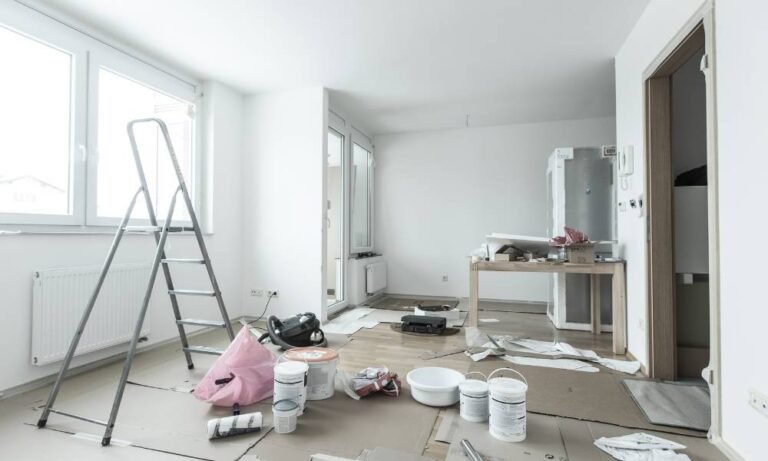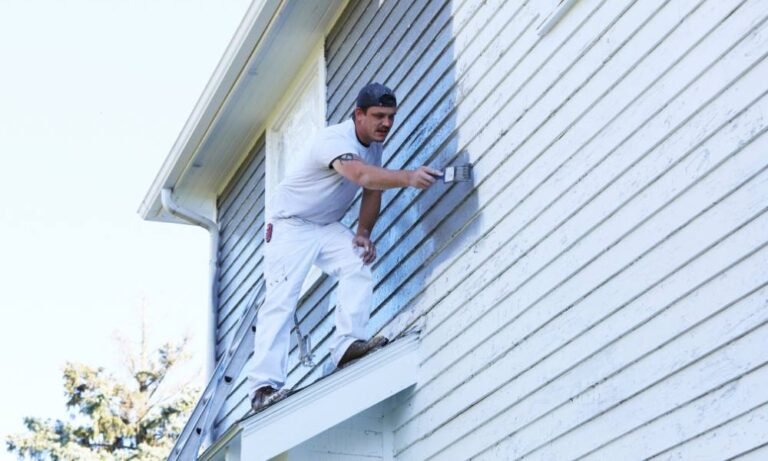Estimated reading time: 5 minutes
Last updated on July 22nd, 2025 at 12:19 pm
Painting a room sounds easy enough, right? Grab a brush, pick a color, and off you go! Well, not so fast. Over the years, I’ve learned that achieving a smooth, professional-looking finish takes more than just slapping on a coat of paint. To help you avoid the same pitfalls I’ve encountered (and seen others endure), here’s a guide to the 10 most common wall-painting mistakes and how to avoid them.
What You’ll Learn:
- How skipping prep work leads to chaos.
- Why painter’s tape is your best friend (when used correctly).
- The importance of cleaning your walls before painting.
- Why running out of paint mid-project is the worst.
- How to pick the right brush for the job.
- The role weather plays in your painting success.
- Why skipping primer is a rookie move.
- How to avoid dripping, peeling, and other disasters.
- The art of patience when applying a second coat.
- Fixing mistakes (because, let’s face it, nobody’s perfect).
Let’s dive in, shall we?
1. Skipping Prep Work
I’ve been there: you’re excited to paint, and prep feels like a waste of time. But trust me, preparation is everything. Not protecting your floors or furniture will result in splattered chaos. To avoid the mess:
- Cover floors and furniture with drop cloths.
- Wrap door handles in plastic wrap and tape around trim edges.
- Remove outlet covers and switch plates (yes, even that one behind the bookshelf).
Light Humor: Think of it as getting your room dressed for the occasion. You wouldn’t go to a wedding in sweatpants, right?
2. Ignoring Painter’s Tape

Painter’s tape is like your secret weapon for clean edges—if you use it correctly. Seal the tape firmly around baseboards and windows to prevent paint from sneaking underneath. Remove it before the paint dries completely, or you might peel off chunks of your masterpiece along with the tape.
Pro Tip: I’ve learned (the hard way) that leaving tape on too long is an invitation for frustration. It’s like leaving a bandage on past its prime—just don’t do it.
3. Not Cleaning the Walls
This one’s a silent saboteur. Dust, grime, and even cobwebs can ruin a smooth finish. Before painting, vacuum your walls (yes, really!) and wipe them down with a mixture of warm water and vinegar. Pay extra attention to corners and baseboards.
Imagine this: you’re admiring your freshly painted wall, only to spot a rogue hair or a dust clump embedded in the paint. Not cute.
4. Running Out of Paint
Nothing halts momentum like realizing you’ve run out of paint halfway through. Measure your walls first! A gallon typically covers about 400 square feet, but always buy extra for touch-ups. Color matching later isn’t always perfect, so it’s better to have a little leftover.
Pro Tip: It’s not about hoarding paint; it’s about saving yourself a panicked trip to the store mid-project, looking like a paint-covered extra from a rom-com.
5. Choosing the Wrong Brush
I’ll admit it: I’ve been tempted by bargain-bin brushes. Don’t do it. Using the wrong brush or roller can leave streaks, bubbles, or a patchy finish. Use synthetic bristles for latex paint and natural bristles for oil-based paints. Angled brushes are perfect for corners and trim.
Light Humor: Think of brushes as tools, not accessories. The wrong one is like wearing flip-flops to run a marathon—disastrous.
6. Painting in the Wrong Weather
For exterior projects, weather matters. Humidity slows drying, and extreme heat can make the paint dry unevenly. For interior painting, ensure the room is well-ventilated for faster drying and a healthier process.
Pro Tip: Painting on a humid day is like trying to dry your laundry in a rainforest. Just don’t.
7. Skipping Primer
I know, it’s tempting to skip primer and dive straight into painting. But primer ensures the paint adheres properly and brings out the true color. If you’re painting over dark or glossy surfaces, primer is non-negotiable.
Good News: Many paints now come with built-in primer, which is great for already painted surfaces. For new drywall or wood? Stick to traditional primer.
8. Overloading Your Brush or Roller

Less is more when it comes to loading your brush. Only dip your brush about a third of the way into the paint. Overloading leads to drips, wasted paint, and uneven application.
Pro Tip: If your roller is dripping before it hits the wall, you’ve officially turned it into a paint grenade. Reel it in.
9. Rushing the Second Coat
Patience isn’t just a virtue—it’s a necessity when painting. Applying the second coat too soon can cause peeling, streaks, or bubbles. Follow the drying instructions on the can, and if in doubt, wait 24 hours.
Personal Anecdote: I once rushed a second coat out of excitement. It peeled off like a bad sunburn. Lesson learned.
10. Fixing Mistakes
Mistakes happen. Dried paint on the wrong surface? Use a scraper or fine-grit sandpaper to remove it. Uneven edges? Carefully touch up with a small brush. Paint spill on the carpet? Blot (don’t rub!) with warm water and dish soap.
Light Humor: Think of this as the “damage control” phase, like when you realize you’ve sent a text to the wrong person.
Conclusion
Painting is part art, part science, and part patience. Avoiding these common mistakes will save you from frustration and help you achieve walls you’ll love to look at. Remember, preparation and attention to detail are your best allies.
Ready to tackle your next painting project? You’ve got this. And if all else fails, there’s always wallpaper.



